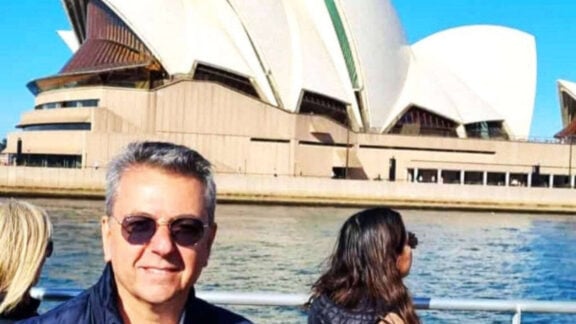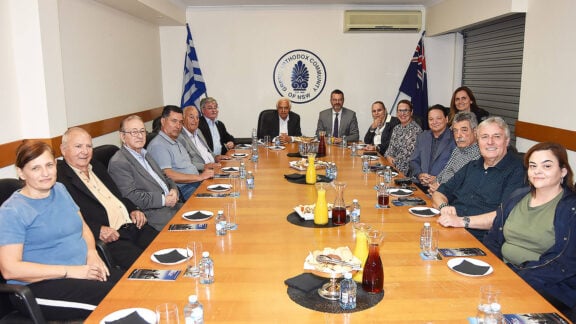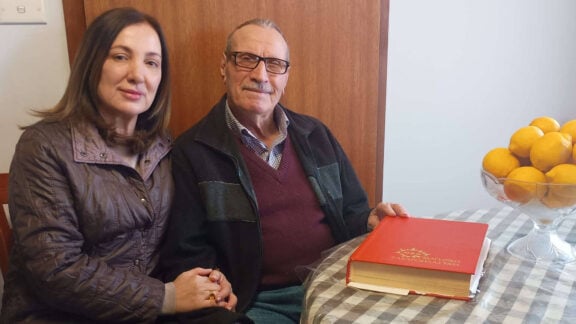In the last few years I have written more than 300 articles on the suicides crises and on suicide prevention. There is not an article that I began writing without having been notified of a suicide. The suicide crisis is harrowing, with 6,000 suicides of Australians in the last two years alone. Suicide takes twice as many Australian lives as all other forms of violence combined, including homicides, military deaths, and the road toll. The suicide toll should be the nation’s most pressing issue – the issue of our time. But alas it is not.
There is not a suicide that I have forgotten – some though, and the wildernesses of grief that follow, are relentless in their haunting. I am driven in my research, writings, in the procurement and development of responses, the urging for a royal commission because the crisis is escalating, because it is evident that many more will succumb to dangerous levels of unhappiness unless serious national conversations validate the ways forward. There needs to be a dawn of new meanings, a context of who we are meant to be while on this earth.
We should not fear to tell the stories of those lost. We should not denigrate them but understand them. I remember a father who found his son hanging and who cradled his son’s lifeless body and lay next to him through the night. More children than ever before are taking their lives. I have never forgotten the nine, 10- and 11-year-olds who ended their days from a sense of hopelessness – at ages that such despair should be unimaginable. Despite the services, there was nowhere for them to turn to when in direst need. After years in immigration detention a former refugee sought help from service after service only to find no-one could actually help. Subsequently he took his life. As I began to write this piece, I have been informed of a pregnant mother who took her life, of a father of four who took his life, of a teenage Aboriginal girl and of a teenage Aboriginal boy who have taken their lives, of a young migrant father who has taken his life, and of a young man who only weeks before taking his life had run into a burning house and rescued a mother and her baby.
Male suicide is at a fourteen year high. There are an increasing number of female suicides. Youth suicides are increasing. There is the humanitarian crisis, the systematic crisis where suicide is a staggering, harrowing toll among Aboriginal and Torres Strait Islanders. It is an abomination that 30 per cent of Australia’s youth suicides (to 17 years of age) are of Aboriginal children. It is an abomination that 80 per cent of the suicides of children aged 12 years and less are of Aboriginal children – the nation should weep.
As a nation we lay claim to responding to suicide – we are one of only 28 nations with a ‘suicide prevention plan’ – and to responding to increasing levels of deep unhappiness with one ‘mental health plan’ after another, with ‘social and emotional well-being plans’ and with ‘resilience’. Despite the good work by many to improve the well-being of the vulnerable, the majority are not reached: the most critically at-risk remain isolated. We have not invested in comprehensively disaggregating the issues that are driving the suicides and the never-before-seen levels of unhappiness. We have not invested in tailor-made education. We have not invested in outreach. And other than the heroic efforts of 24/7 phone-in services, the majority of those we lose to aberrant behaviour and to suicide never pick up that phone. Suicide prevention and the making of a happier society are not national priorities despite increasing funding.
The catastrophic suicide crisis among Aboriginal and Torres Strait Islander peoples accounts for more than five per cent of Aboriginal and Torres Strait Islander deaths. In fact in my estimations, because of under-reporting issues, suicide accounts for 10 per cent of Indigenous deaths. The contributing factors are many and intertwined, underwritten by the kind of acute poverty, disadvantage, and marginalisation that should make no sense in one of the world’s wealthiest nations. In my experience nearly 100 per cent of Aboriginal suicides are of people living below the poverty line. Suicides of Aboriginal and Torres Strait Islander people living above the poverty the line, those earning a good quid is almost negligible, and much lower in toll and rate than the rest of the nation’s non-Aboriginal population groups.
But Aboriginal suicides are not limited to socio-economic factors. From within the cesspool of this situational trauma – this narrative of victimhood – there has manifest a constancy of traumas – multiple, composite, aggressive, complex traumas. There are pronounced negative behaviours compounding socio-economic poverty – violence, lateral violence, relationship breakdown, sexual abuse, incarceration, loss of self-esteem.
We need more than just generalised counselling, but this last resort is the first resort. Resilience selling is part of this generalised counselling where we beg the victim to adjust their behaviours – but how far and for how long without hope on the horizon? Resilience building should be intended as interim, as part of improving one’s well-being while the bigger picture of pathways to happiness and various opportunities are journeyed.
One in four of Australia’s suicides are of migrants – and newly arrived migrants are particularly at elevated risk to unhappiness and suicide. Culturally and linguistically diverse migrants are at elevated risk. As a young child I remember the absorption of sadness by some of Sydney’s Greek community of the suicide by a newly-arrived young Greek male. Years later I would read some of his letters to the homeland, yearning to return after he made his money in a country he believed found it hard to accept to him. This is a tale of many newly-arrived migrants albeit to one of the world’s most culturally diverse nations. Racism has many veils and layers and misoxeny and xenophobia are toxic.
We need to disaggregate to the elevated risk groups, which include LGBQTI people, former inmates, foster children, individuals who as children were removed from their families, the homeless, the chronically impoverished, newly-arrived migrants.
Identifying trauma and understanding the issues that despair individuals and collectively as families are imperative in tailor-making the education, the conversations and the support. We start with behavioural observations and proceed with the opportunity for the individual to tell their story. People need people, 24/7. The positive self is imperative and to this we must work alongside people. What makes for unhappiness and happiness has to be understood – human beings are inherently courageous. The majority only need to understand the ways forward and they will choose happiness. The factors that can culminate in suicide are the most preventable of the various destructive behaviours that impact on families and communities. There are many ways forward.
We cannot live in the silences and dangerously internalise sadness. Many of us have sat with thousands of vulnerable individuals and families. People are crying out to be heard and the majority of those who need to be heard and validated are crying out for some support so they can rise out of the grief that overwhelms them. It is not true that everyone can do this alone.
Despite all the good work done by many in saving lives, the suicide toll, particularly for the most elevated risk groups, is on the increase. It is never enough to deal with the symptoms. The cause must be validated without languishing within it so as to avoid drowning in negatives and misery.
Our capacity to listen is an imperative and must be achieved without judgment, for often redemption is needed: forgiveness in addition to sympathy and empathy. These skills do not come easy to everyone but they are vital in the suicide prevention space, in trauma counselling, in restorative therapies, in navigating people to a positive self.
There will never be ‘zero suicides’ – but 6,000 suicides in two years indicts neglect. These suicides are the ones we definitely know of, we know there are many more. It is estimated that ten percent of road fatalities are suicides. Other suicides are classified as ‘overdoses’ or ‘misadventure’. The suicide toll over the last two years could be in excess of 10,000. Happiness is something I have touched on in previous articles and will write about in ensuing articles because we have to soak up what contexts in which we want to live our meanings and mattering and what we want those around us to soak up.
There is no greater legacy that any government can have than to prioritise and invest in the improving of lives, the changing of lives, the saving of lives. Happiness, humility, and reasonable-mindedness free us.
Readers seeking support and information about suicide prevention can contact Lifeline on 13 11 14 or Suicide Call Back Service 1300 659 467.
* Gerry Georgatos is a suicide prevention and prison reform researcher and advocate with the Institute of Social Justice and Human Rights. He is a member of national projects to further develop suicide prevention and prisoner wellbeing and education programs. He is also a prolific writer in understanding racism and on the ways forward from racism.








